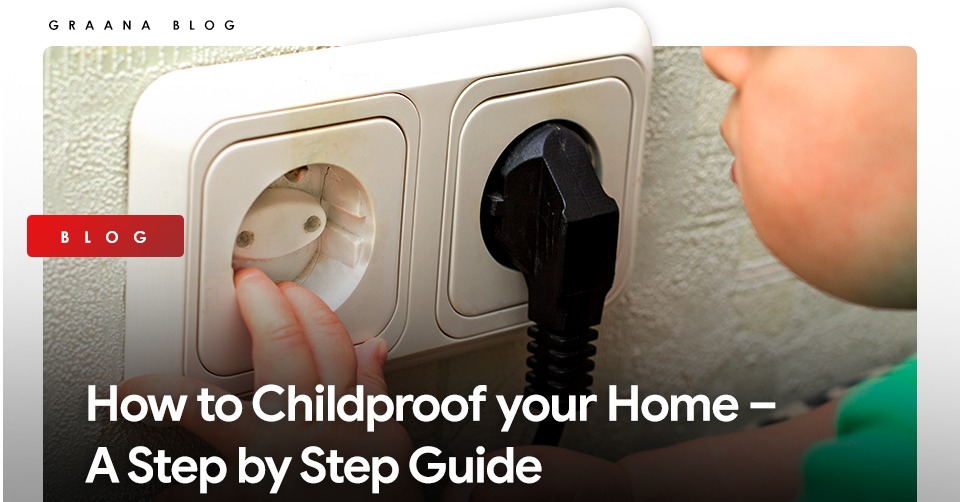
It may seem daunting to childproof your home, but just a few simple steps can make it safer. It is imperative to make sure that your children cannot get out of your home or get into rooms before you begin childproofing it.
A list of what needs to be done in the home to ensure a safe environment when welcoming a new baby may be daunting to expectant parents. Parents can get turned around by seemingly endless lists of must-haves
by adding a baby-proofing product search to the mix.
If you think you have done everything right with childproofing, there’s still a chance something’s been missed.
Babyproofing your home can make a big difference in keeping your child safe. As a starting point, examine all electrical outlets, windows, and detectors. You should pay particular attention to your child’s bedroom or nursery, as well as the kitchen and bathroom.
The article will help you prevent unnecessary injuries and accidents by showing you how to childproof your home.
Identifying potential sources of injury is the responsibility of parents and guardians. Research has shown that most incidents occur when:
Detect potential dangers in your furniture, stairs, and household items, and install protective measures. Examples include:
To a child who is exploring, stairs seem like an interesting challenge. But each day, many children visit the emergency room after they’ve fallen. You can avoid costly hospital bills and injuries by taking some precautions around your staircase.
There should always be a cover on the tub faucet. Your toddler can be protected from bumps and bruises with spout covers. As another precaution, set your water heater to 120 degrees Fahrenheit so that your child won’t burn himself. You can install an anti-scald device on your faucet if you live in an apartment building and cannot adjust yours. Water flows are stopped by sensors when the temperature exceeds a safe level.
There is no liner in the wastebasket. When you line the bathroom trash with a plastic grocery bag, it may be easier to empty, but the convenience isn’t worth the risk. The toddler could suffocate by putting the bag over her head.
There is no way to close the door. Among kids, fingers and thumbs are the most commonly amputated parts. A towel can be draped over the top of a door to prevent it from closing all the way. This step is one of the important step in order to childproof your home.
Fireplaces are common in many homes, and while it can be cozy to have a fire going on a cold night, it is a good idea to protect your children from the flames.
When you’re lighting a fire, a fireplace gate is a great way to keep your kids from getting too close to the flames.
Do not leave your children unattended when your fireplace is burning. Keep your fireplace and chimney clean and inspected regularly.
Kids can be seriously burned on your stove by food cooked there or by turning on the burners when they aren’t paying attention.
Using the back burners and adjusting the handles to avoid facing forward can help prevent burns. A stove guard is another way to make your stove safer.
Plastic guards work similarly to stove guards to protect your children from electronics in your homes, such as your TV, VCR, or DVD player.
You shouldn’t just stop at your front door when it comes to baby-proofing—the same goes for your car. The baby’s first contact with the world is in the vehicle on his way home from the hospital, so it’s crucial to review the basics of car seat safety. As you begin to babyproof your car, keep these tips in mind.
The back seat of your vehicle should have an approved rear-facing car seat installed (preferably in the middle). Get it checked by a child passenger safety technician.
If you live in an area where the sun is especially harsh, consider using stick-on sun shades to block its rays (avoid sun shades that hang or are held in place with suction cups that could fall or come off).
If possible, remove coins and pens from the car that could pose choking hazards to children.
Baby wipes and supplies should be kept on the changing table where you can access them, but the child cannot.
Make sure that the changing table is covered with a thick carpet or rug.
The crib should be positioned away from windows, heaters, lamps, wall decorations, and cords.
To prevent exposure to toxic fumes prior to the baby’s arrival, complete all painting and wallpapering eight weeks ahead of time.
Ensure that the crib’s slats are not more than two and three-eighths of an inch apart and that all screws and bolts are tight. Ensure that the mattress does not protrude from the crib.
Bedding, comforters, pillows, blankets, and toys should not be placed inside the crib.
Despite our best efforts, it isn’t possible to keep our children safe from all harm with bubble wrap. However, it is possible to prevent an awful lot of injuries and accidents with little planning, child locks, and common sense.
ISLAMABAD, Pakistan – April 23, 2025 – Chaaye Khana, Pakistan's popular cafe renowned for its…
ISLAMABAD: Prime Minister Shehbaz Sharif laid the foundation stone for the Murree Road underpass on…
DUBAI: Pakistani real estate developers and representatives showcased a range of commercial and residential investment…
ISLAMABAD: Capital Development Authority (CDA) is currently undertaking a major Rs652 million project to upgrade…
Karachi – Mayor Barrister Murtaza Wahab has announced the launch of a citywide anti-encroachment operation…
ISLAMABAD: CDA Chairman Muhammad Ali Randhawa has directed the immediate restoration of 23 non-functional water…